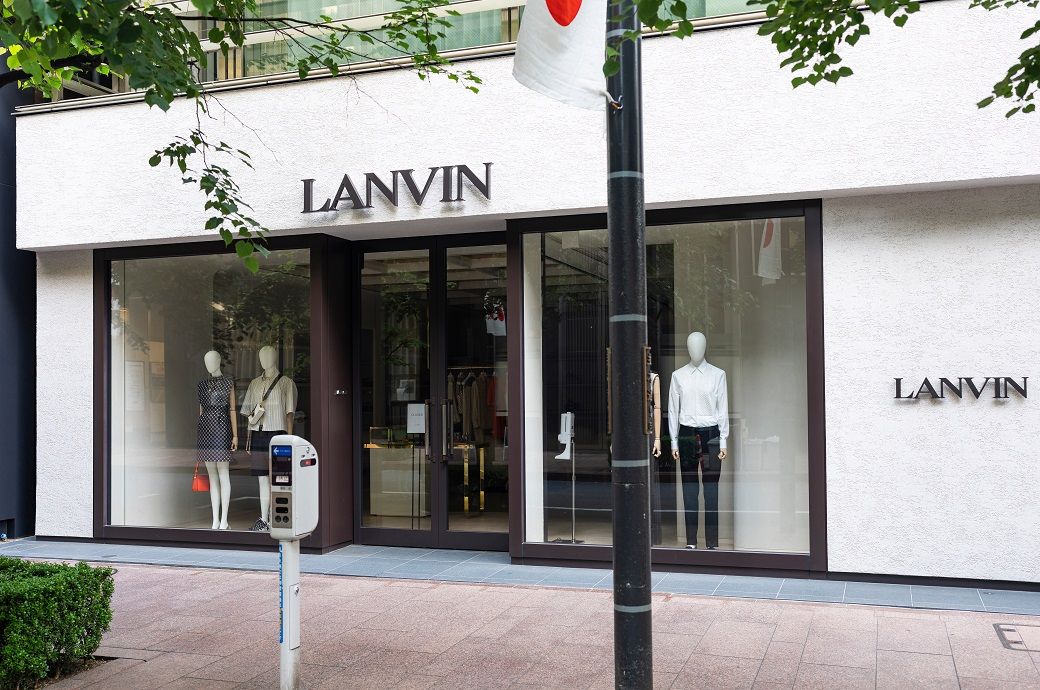
The gross profit decreased to €183 million, reflecting a margin of 56 per cent, compared to €251 million in 2023 with a margin of 59 per cent. The decline in gross profit is primarily attributed to a drop in gross profit from one of its brands, Wolford, with increased costs related to the new logistics provider.
Lanvin Group has reported revenue of €329 million (~$351 million) in FY24, down 23 per cent YoY, citing a transitional year of creative and strategic realignment.
Gross profit fell to €183 million, mainly due to Wolford’s increased logistics costs.
Despite challenges in EMEA and Greater China, North America and Japan performed steadily.
DTC sales made up 61 per cent of total revenue.
The group continued its strategic store optimisation initiative, combining selective new retail openings with the consolidation of underperforming locations. This move reinforces its focus on core and high-potential markets, Lanvin said in a press release.
It reported steady performance in North America and Japan, driven by strong contributions from St John and Sergio Rossi, while Europe, the Middle East, and Africa (EMEA) and Greater China faced headwinds due to broader luxury industry challenges.
Despite regional disparities, the group’s direct-to-consumer (DTC) channels remained resilient, accounting for 61 per cent of total sales. This underlines the effectiveness of Lanvin’s market-focused strategy and its disciplined approach to retail network management.
The group continued refining its retail footprint by consolidating underperforming stores while selectively opening new locations. Both Lanvin and Sergio Rossi achieved successful expansion in the Middle East.
The adjusted EBITDA remained at loss for FY24, while the group made a significant effort to optimise the cost structure and enhance operational efficiency in this fiscal, the increase in adjusted EBITDA loss was primarily driven by a decline in gross profit, which was only partially mitigated by the reduction in operational expenses.
Brand-wise, Lanvin reported a 26 per cent revenue decline to €83 million, with gross profit down to €48 million, though the margin remained steady at 59 per cent. Wolford’s revenue declined 30 per cent to €88 million.
Sergio Rossi saw revenue fall 30 per cent to €42 million, with margin pressures from fixed production costs, though cost-cutting measures helped offset some losses. St John’s revenue fell 12 per cent to €79 million, but gross margin improved to 69 per cent due to better full-price sales and lower production costs. Caruso recorded a milder 7 per cent revenue decline to €37 million, with stable gross profit, supported by strong growth in its branded business.
In 2025, Lanvin Group is poised for a robust recovery and remains unwavering in its long-term vision, driven by operational discipline and a surge in creative momentum. Under the leadership of the new executive president, Andy Lew, the group is enhancing its management capabilities and establishing a second headquarters in Europe to further streamline the organisation, added the release.
The group further said that it will continue to maintain a strategic focus on key areas and core products, while exploring undiscovered regions and emerging product categories to unlock new growth opportunities. Retail network optimisation will continue to be a priority, with efforts to refine the store footprint, simplify the operations and concentrate on core business units.
“2024 was a year of transformation for Lanvin Group. While market conditions were challenging, we made critical strides in strengthening our brands, optimising our operations, and laying the groundwork for future growth. With our renewed creative leadership and disciplined execution, we are confident in our ability to navigate the evolving luxury landscape and deliver long-term value,” said Zhen Huang, chairman of Lanvin Group.
Fibre2Fashion News Desk (SG)

